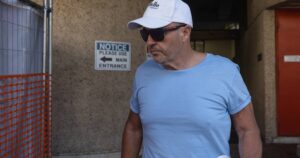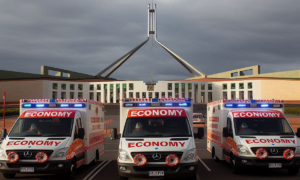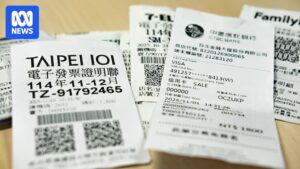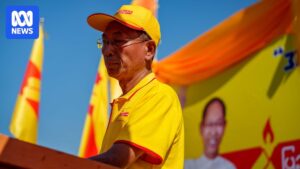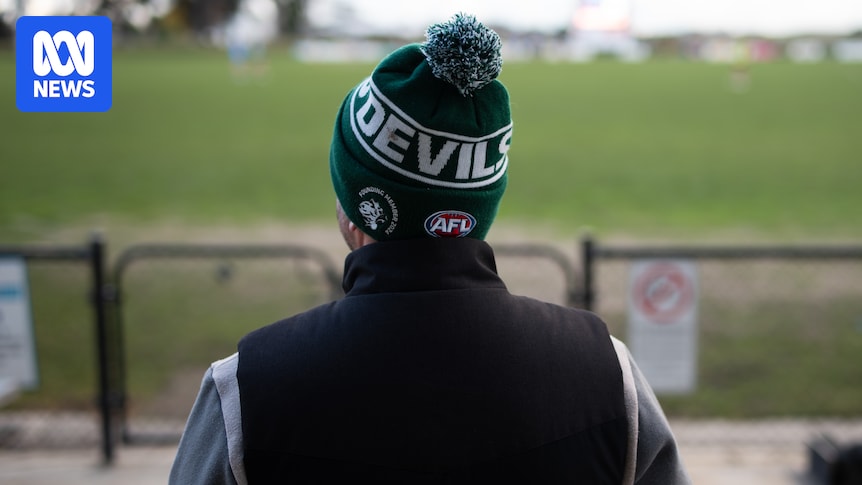
The proposed Macquarie Point stadium in Hobart is emerging as a pivotal issue in the upcoming Tasmanian state election. According to responses from ABC’s Your Say platform, the stadium is a hot-button topic that could influence voter decisions at the polls.
More than 1,000 Tasmanians shared their views with the ABC, and a significant number identified the stadium as a key issue. While Your Say is not a formal poll, it offers a platform for public opinion, revealing that the majority of respondents, particularly those over 60, are concerned about the stadium’s impact.
Voter Sentiment and Political Implications
First-time state Greens candidate Vanessa Bleyer, contesting the Braddon seat, believes the stadium could be a vote-changer. “Nine out of 10 people in Braddon are raising the stadium to me very quickly as a core issue,” she stated. Bleyer noted that many voters opposed to the stadium’s funding are considering changing their votes.
Leanne from Devonport, a Labor voter, expressed her potential shift to the Greens if the Labor Party continues to support the stadium. Similarly, Beatrice in Shearwater, who voted Labor in the federal election, is contemplating a switch due to the stadium issue.
“I would like to vote Labor as I’m pleased with federal Labor, but I can’t if they’re going ahead with the stadium. So, it’s the Greens for me this time,” Beatrice said.
Independent candidate Craig Garland, also running in Braddon, reported a clear message from constituents: support for the stadium could cost votes. “If you support the stadium, you haven’t got my vote,” is a sentiment Garland hears frequently.
Community Division and Broader Impacts
Opinions remain split among the public, especially at local football grounds. Melissa Bishop, attending a north-west football game, noted, “I don’t think it should be a cut-throat deal, no stadium no team,” referring to the AFL’s condition for Tasmania’s entry into the national competition.
Meanwhile, Doug Rowlings from Devonport argued that a stadium in Hobart would be inconvenient for many fans. “People in Smithton aren’t going to travel all the way to Hobart for a game of football,” he said.
Despite being too young to vote, 13-year-old Circular Head junior footballer Harvey Vanderlaan supports the stadium, believing a new venue in Hobart is necessary for a Tasmanian AFL team.
Political Reactions and Strategies
Liberal candidate for Bass, Rob Fairs, noted that the potential benefits of the stadium are a frequent topic during his campaign. “People are telling me they’ll vote to save the dream,” he said, referring to the establishment of a Tasmanian AFL team.
Conversely, Labor candidate Luke Martin, campaigning in Hobart’s northern suburbs, reported that the stadium is not a primary concern for his constituents, who are more focused on everyday issues like health and housing.
Demographic Insights and Future Prospects
Older Tasmanians, particularly those aged 60 to 69, are more likely to express concerns about the stadium, with 66% referencing it as a key election issue. Younger respondents, however, are less focused on the stadium, prioritizing issues like public transport and LGBTQIA+ rights.
Independent candidate David O’Byrne, running in Franklin, believes the stadium could sway votes, particularly among supporters of the proposal. “The people who are against the stadium are predominantly staying where they are,” he observed.
“The election is in the middle of football season, and the biggest issue for a lot of sporting communities is the Devils and the stadium,” O’Byrne added.
As the election approaches, the debate over the Macquarie Point stadium highlights broader concerns about public spending and state priorities. Voters are weighing the potential economic and social benefits of the stadium against other pressing needs.
With early voting already underway, the stadium debate is likely to continue shaping the electoral landscape in Tasmania, influencing not only party strategies but also voter turnout and engagement.

